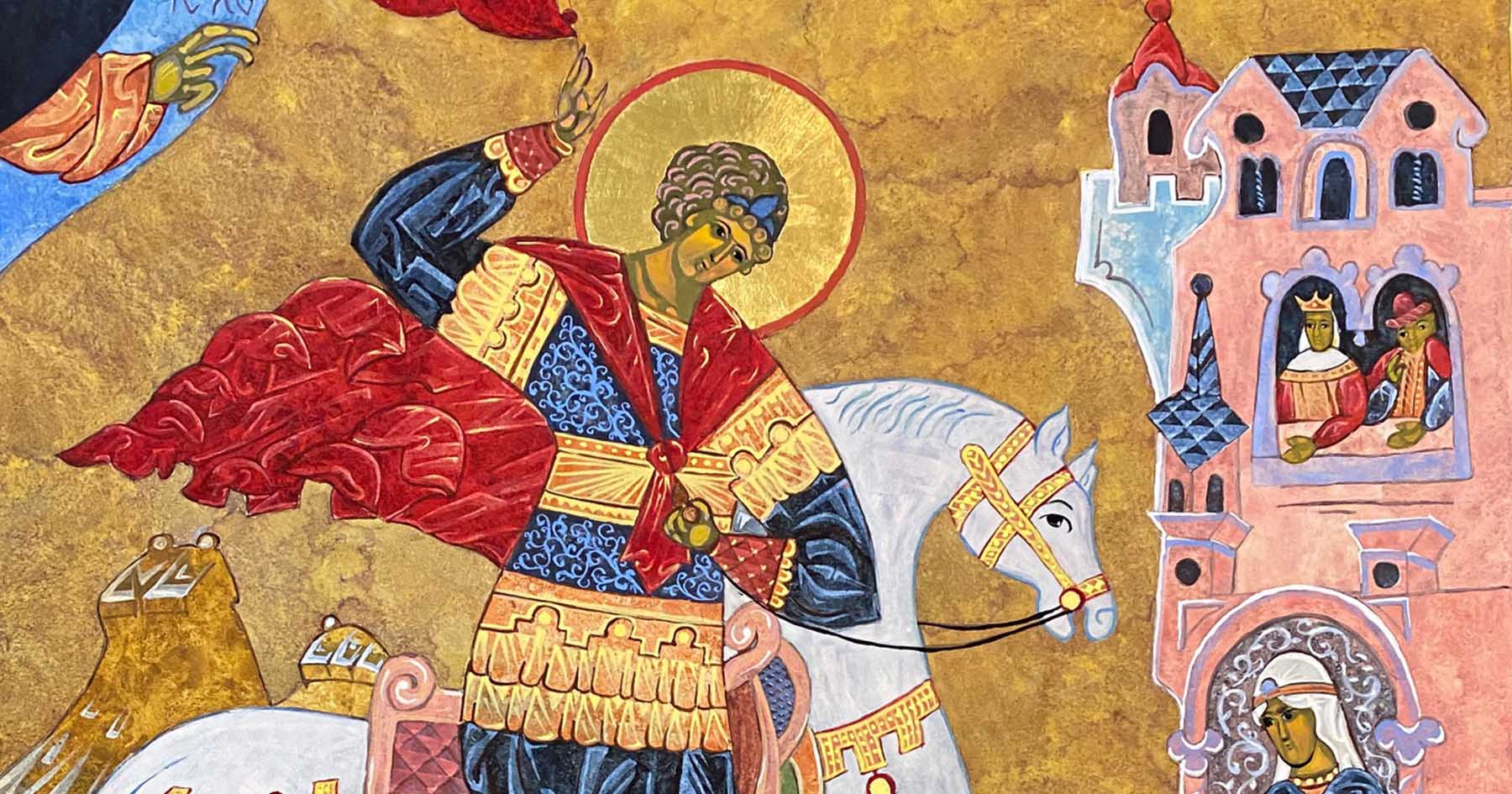The Prosopon School of Iconology has presented me the experience of writing icons as a spiritual practice. I have travelled nearly annually to Northeast Minneapolis, Minnesota to participate in its intensive workshops hosted at St Mary’s Orthodox Cathedral.
The entry point for students learning to write icons in the Russian Byzantine tradition is to write Saint Michael the Archangel. I remember the holy atmosphere of that first day as I looked at the empty white gesso board and opened my spirit to the meditative instruction of the master iconographers. One of the instructors, Tatiana, spoke of the depth of meaning hidden beneath the white surface of the gesso and I was in awe — wood, linen, marble dust, rabbit skin glue and chalk each carefully layered, smoothed and prepared for the first lines of the image of the icon to appear. The lines of Saint Michael the Archangel, which are like the lines of words, speak a spiritual message in symbolic colours, forms, figures and patterns of light. The message — rich in symbolism — invites the iconographer to consider how she or he too bears this image.
These angels of light invite the iconographer to share in the angelic mission of bearing witness to God who dwells in pure light by deepening our awareness as image-bearing creatures in a community of image-bearers. What is most exciting to me about writing icons is the way in which one works with earthy elements to experience transcendent mysteries. Take for example, the way to gild gold for a nimbus. You apply red clay in the circle around the head of a saint and then you burnish it to make it smooth and ready for adhering thin layers of 24 karat gold leaf. What ensures a cohesion of the leaf to the clay is your many deeply drawn warm breaths right over the area you are applying the gold. What this says — and it says in a very embodied way — “we are formed out of clay and yet we can be transformed by divine light!”
There have been moments of awe — and admittedly of frustration — when writing an icon. Tempera paint cannot be forced to do what you want like acrylic or oil paint. The pigments are made from wine, egg yolk and ground earthly pigments. Earth and stone are harvested from all over the world and ground down to be added to an emulsion that must be floated in layers on the surface of the gesso. You cannot force the paint. The granules of lapis lazuli, cinnabar, vermillion, tin lead and umber have their own energy. When you apply the paint to the icon, you are working with their energy. They decide where they want to lay down and fuse with the layers beneath them and the layers to come. This in itself is a spiritual experience. We do best in life when we recognize and submit to the way Earth and Heaven are coming together and settling into our lives.
I have gone on to write many other icons. The icon of Elijah saw me through the pandemic as we all faced a time of exile, much like being on the run from Jezebel, stranded in the wilderness bemoaning the isolation, and needing divine intervention and sustenance (as shown in the bread/host in the raven’s beak).
The icon of Saint George and the Dragon led me to contemplate the figures of the horse (representing human willpower) and the dragon (representing the deceiver). I came to appreciate this image for the way it encourages battling against deception and triumphing against it.
The latest icon I have begun to write is of Saint Symeon and the Christ Child. It has special meaning for me because I began to write it on the day my first grandchild was born. Once I have finished the icon, I will gaze upon it in prayer and grow as a grandmother who desires to embrace this new child as one who reveals the face of Christ to me and to her parents.
The final element in writing an icon is to anoint it with oil. This oil saturates all the layers of pigment and gold to bind everything together. It makes the icon ready for use in the spiritual practice of gazing upon it to know one’s self in this, and to know the Creator in an ever deeper and enriching way.




